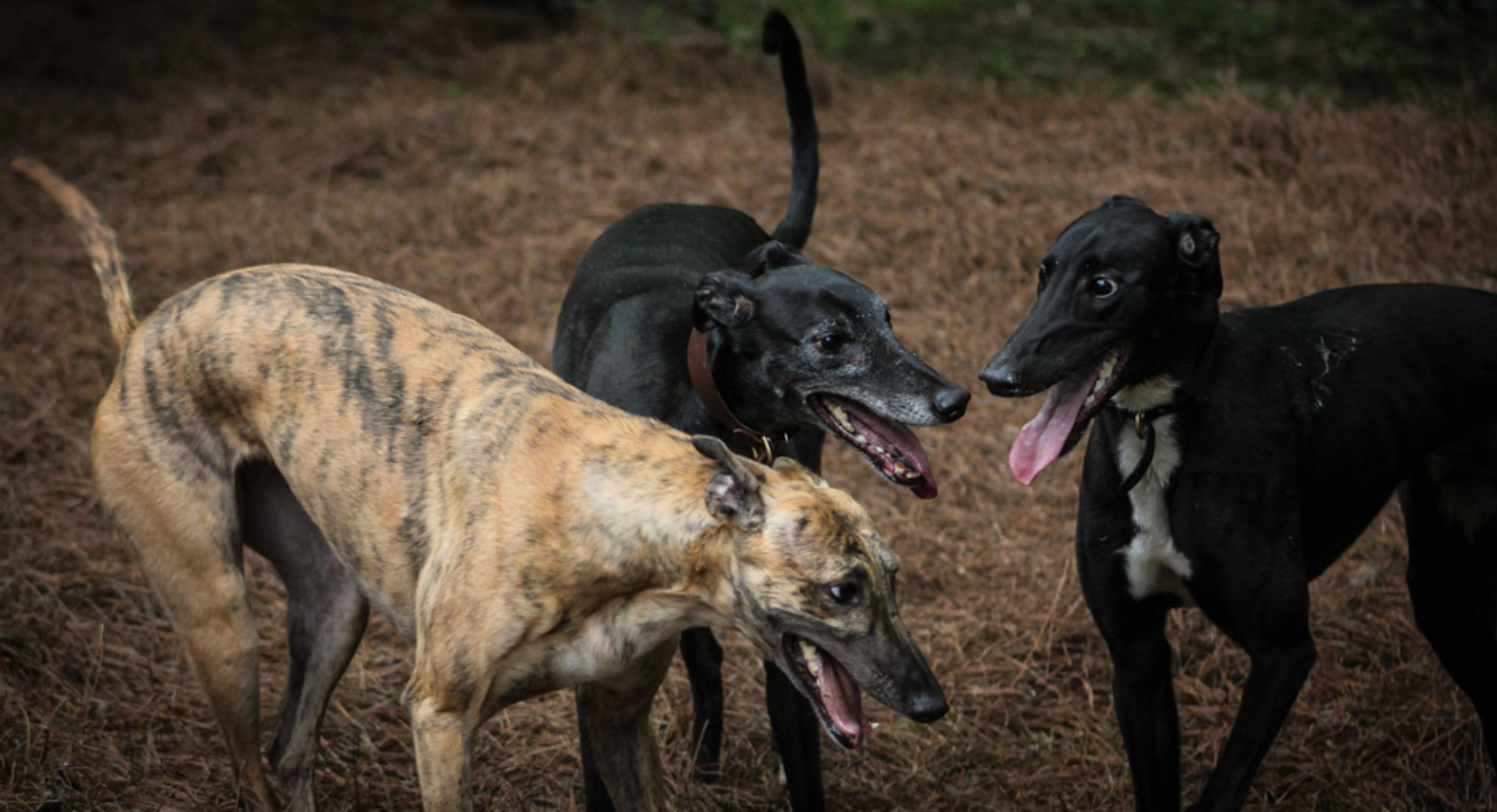Besides poop-bags, the other most commonly used product for the greyhound is a collar. When you adopt your greyhound most likely they will be equipped with a muzzle and a martingale collar.
When I got my first greyhound I read a lot about the martingale collar. Everyone seemed to recommend this as greyhounds have skinny necks and can “back out of their collars.” What I was not clear on was that martingale collars should only be used for training or walking.
Unfortunately I found this out the hard way. One day Jethro and Darla were playing. They both had on martingale collars. Something happened and Jethro got Darla’s collar wrapped around his mouth. He was struggling to free himself and choking Darla in the process. Both Greyhounds were squealing and I was freaking out. I knew I had to act quickly. The saving grace was that Darla’s collar was too big and by a miracle I was able to pull Jethro close enough to Darla to give the collar some slack and pull it over her head. Darla and Jethro were OK; however, this could have ended in disaster if I had not been right there. I vowed only to use a Martingale collars while training.
Greyhounds can be flight risks and per their adoption agreement they need collars on all the time. I was frustrated with what I was going to do.
I first ordered leather fishtail collars. These collars are beautiful and I love to see Greyhounds sporting these collars, as they look so regal. Overall they are very effective but there was one drawback. My hounds are quite rambunctious and they have been known to take a notion to jump in the pool with a collar on. Their leather collars were quite worn at about a year. Sashi has been banned from leather. He chewed through one collar and did some damage to another. There had to be a better product.

One day I was watching a Greyhound race and noticed that the Greyhounds were being walked to the starting box with plastic buckle collars. I found Gun Dog Supply online and ordered a TufFlex collar for Sashi. These collars also included a brass nameplate that is riveted to the collar. They gave off a plastic smell when I first opened the package, but it dissipated overnight.

I love love love these TufFlex collars. Now all three Greyhounds wear these collars. They are easy to clean, pick up no odor from the dogs, and fit incredibly well. My Greyhounds cannot back out of these collars as long as they are adjusted in the correct position. I have been using these collars for about one year and can’t say anything negative about them.
I hope that one of these collar options suits you and your Greyhound!






